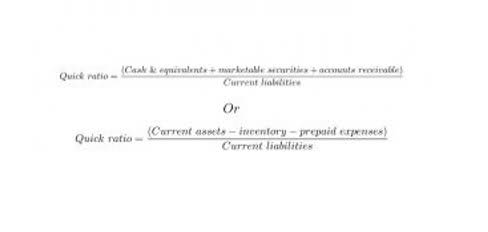
If that event occurs on, say, December 15th of the year, it can distort the company’s apparent number of shares outstanding for the year. Calculating the weighted average number of shares resolves the problem by taking into account the length of time that the changed number was in effect. In other words, the formula takes the number of shares outstanding during each month weighted by the number of months that those shares were outstanding. After collecting share count data, the next step is applying weighted time periods to account for changes in the number of shares outstanding throughout the year. This ensures the calculation reflects the varying number of shares over time.
Impact of sale and purchase of shares on weighted average number of shares outstanding

On the other hand, float stock refers to the quantity of publicly-tradable shares of a company’s stock. To determine the floating stock, one deducts the restricted shares, such as those held by company insiders or the company itself, from the total number of outstanding shares. The primary distinction between issued and outstanding shares is that issued shares comprise both outstanding and treasury shares, whereas outstanding shares solely include shareholder-owned shares. common shares outstanding formula On the other hand, Treasury Shares are repurchased by the company and retained in its own treasury. Treasury Shares represent the company’s ownership of its stock, while outstanding shares represent the ownership interest of shareholders.
- Of the $250 million in net earnings, $25 million was issued to preferred shareholders in the form of a dividend.
- Outstanding shares can refer to both types of shares, common and preferred, as they don’t represent a specific type of share but rather the total number of shares held by investors.
- It includes the shares owned by company management, shareholders and institutional investors such as hedge funds.
- Calculate the retained earnings, reflecting cumulative profit retained within the business.
- Companies with big news that affects their number of shares outstanding, such as stock splits, announce the events in press releases that are reported by the business media.
- These standards ensure consistency and comparability across financial statements, allowing stakeholders to accurately assess a company’s performance.
How to Calculate the Number of Shares a Company Has
- Warrants are instruments that give the holder a right to purchase more outstanding stock from the company’s treasury.
- This $8.00 EPS is referred to as «basic» because the total is not adjusted for dilution.
- Calculating common stock helps investors assess a company’s equity structure and potential for growth.
- In the US, public companies are obligated to report their number of shares outstanding as part of the SEC’s filing requirements.
- So a larger company’s profits per share can be compared to smaller company’s profits per share.
- Yes, the number of outstanding shares of a company can be found in SEC (Securities and Exchange Commission) filings such as 10-K annual reports and 10-Q quarterly reports.
The company determines the maximum number of shares it can issue, when creating a company. The board of directors or shareholder vote may increase the number of authorized shares. Basic outstanding shares and diluted outstanding shares are two methods for calculating a company’s total number of outstanding shares.

Steps to Calculate Weighted Shares

The land on which one of the factories sits has become very valuable as new developments have surrounded it over the past few years. The company’s management team decides to sell the factory and build another one on less valuable land. Learn how to calculate deferred revenue for your business simply and effectively, ensuring accurate financial tracking. Learn how to calculate Z spread in finance with our step-by-step guide, covering credit spreads, bond valuation, and risk management strategies.

How do you find common stock on a balance sheet?
Historical earnings, on the other hand, are set in stone but may not fairly represent a company’s legitimate growth potential. The share price of a stock may look cheap, fairly valued or expensive, depending on whether you look at historical earnings or estimated future earnings. Regardless of its historical EPS, investors are willing to pay more for a stock if Online Accounting it is expected to grow or outperform its peers.
Government and Educational Resources on Weighted Average Shares Outstanding Calculations
To determine the outstanding shares, you must deduct the number of repurchased or retired shares from the total number of shares issued by the company. Record Keeping for Small Business A company’s market capitalization will increase proportionally to the number of outstanding shares if the market price per share remains constant. The market capitalization will also fall if the market price per share remains constant and the number of outstanding shares declines. The Earnings Per Share (EPS) is the ratio between the net profit generated by a company and the total number of common shares outstanding.
Identifying Periodic Changes
A portion of the earnings may be distributed as a dividend, but all or a portion of the EPS can be retained by the company. Shareholders, through their representatives on the board of directors, would have to change the portion of EPS that is distributed through dividends to access more of those profits. Preferred stock is often misunderstood, but it’s actually quite straightforward. The main difference between preferred stock and common stock is that preferred stockholders have a higher claim on assets and dividends than common stockholders. The result is then divided by the number of shares of common stock outstanding for the period. A stock split doesn’t change the total par value, but it can significantly increase the number of shares.

In a bull market, it is normal for the stocks with the highest P/E ratios in a stock index to outperform the average of the other stocks in the index. Earnings per share shows an investor how to pick stocks, when used along with other indicators. If you have an interest in stock trading or investing, your next step is to choose a broker that works for your investment style. Preferred stock typically has a fixed dividend rate, which means you know exactly how much you’ll get paid each year.